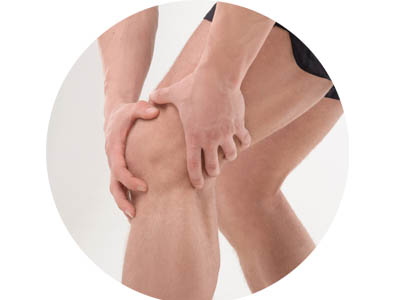
Joint Pain
Joint pain is a very common problem with many possible causes – but it’s usually a result of injury or arthritis. Multiple Joint pain can range from mildly irritating to debilitating. It may go away after a few weeks (acute) or last for several weeks or months (chronic). Even short-term pain and swelling in the joints can affect your quality of life. Whatever the cause of joint pain which can affect one or multiple joints, you can usually manage it with medication, physical therapy or alternative treatments.Multiple joint pain should be investigated for more systemic conditions.
Causes
In most cases, the cause of pain originating inside multiple joints is arthritis. Disorders that cause arthritis may differ from each other in
certain tendencies, such as the following:
- How many and which multiple joints they usually involve
- Whether the central part of the skeleton, such as the spine or pelvis, is typically involved
- Whether arthritis is sudden (acute) or longstanding (chronic)
Acute arthritis affecting multiple joints is most often due to
- Viral infection
- The beginning of a joint disorder or a flare up of an existing chronic joint disorder (such as rheumatoid arthritis or psoriatic arthritis)
Less common causes of acute arthritis in multiple joints include Lyme disease (which also may affect only one joint), gonorrhea and streptococcal bacterial infections, reactive arthritis (arthritis that develops after an infection of the digestive or urinary tract), and gout.
Chronic arthritis affecting multiple joints is most often due to
- Inflammatory disorders such as rheumatoid arthritis, psoriatic arthritis, or systemic lupus erythematosus (in adults)
- The noninflammatory disorder osteoarthritis (in adults)
- Juvenile idiopathic arthritis (in children)
Other causes of chronic arthritis in multiple joints include autoimmune disorders that affect the joints, for example, systemic lupus erythematosus, psoriatic arthritis, ankylosing spondylitis, and vasculitis.
Some chronic inflammatory disorders can affect the spine as well as the limb joints (called the peripheral joints). Some affect certain parts of the spine more frequently. For example, ankylosing spondylitis more commonly affects the lower (lumbar) part of the spine, whereas rheumatoid arthritis more typically affects the upper (cervical) part of the spine in the neck.
The most common disorders outside the joints that cause pain around the joints are
- Fibromyalgia
- Polymyalgia rheumatica
- Bursitis or tendinitis
Bursitis and tendinitis often result from injury or arthritis , usually affecting only one joint. However, certain disorders cause bursitis or tendinitis in many joints.
Evaluation
In evaluating joint pain treatment , doctors first try to decide whether joint pain is caused by a disorder of the joints or injury or arthritis a serious bodywide (systemic) illness. Serious bodywide disorders may need specific immediate treatment. The following information can help people decide when to see a doctor and know what to expect during the evaluation.
We have best orthopaedic surgen who give you joint pain treatment and remedies so that you get relief with injury or arthritis , muscle and joint pain .
Warning signs
In people with pain in more than one joint, symptoms that should prompt rapid evaluation include
- Joint swelling, warmth, and redness
- New skin rashes, spots, or purple blotches
- Sores in the mouth or nose or on the genitals
- Chest pain, shortness of breath, or new or severe cough
- Abdominal pain
- Fever, sweats, or chills
- Eye redness or pain
